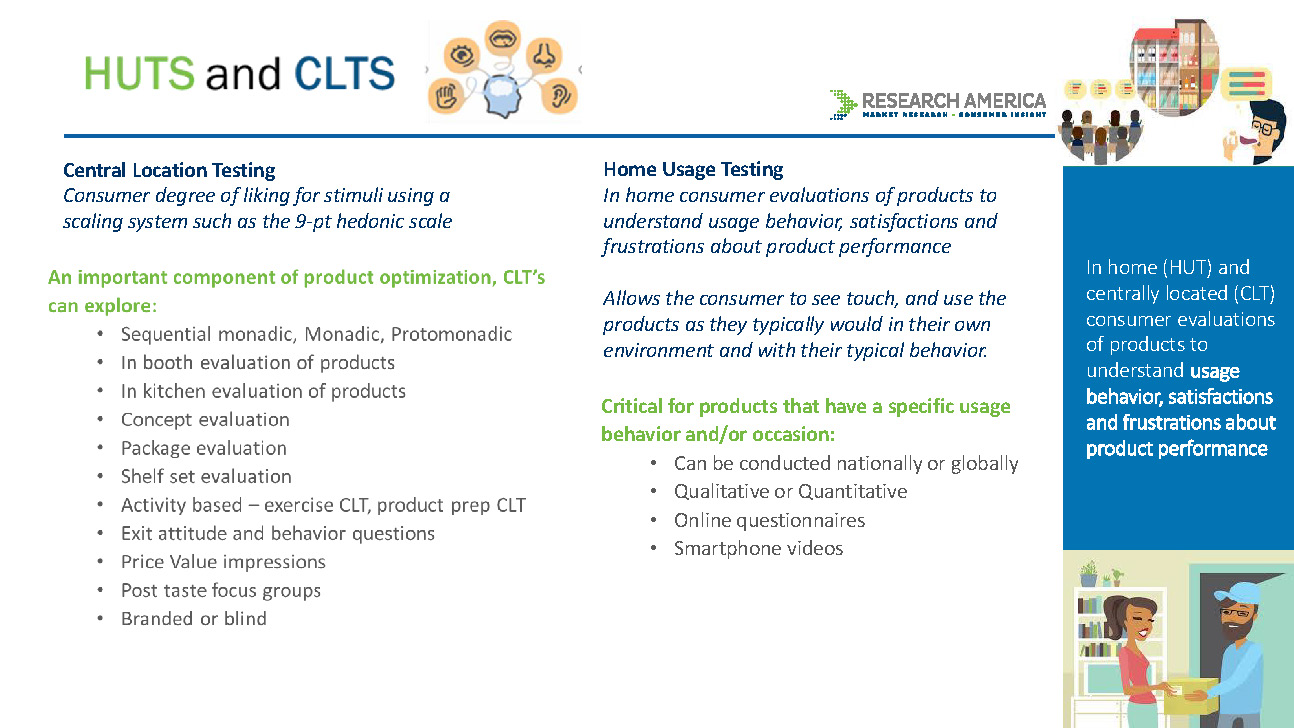
- Home
- Services
- Products
- About Us
- News
- Industries
- Resources
- Contact
Newtown Square • Philadelphia • Detroit • Cincinnati • Sacramento • Rochester • Willow Grove • Orlando • Buffalo


Sensory analysis, also known as sensory evaluation, is the scientific way to measure, analyze and interpret reactions to characteristics of products as they are perceived by people’s sense of sight, smell, taste, touch and hearing. Central Location Testing (CLT), Home-Usage Testing (HUT), Discrimination Testing, 60/40 Testing, and Descriptive Analysis are a few of the different methods Research America uses to collect this data

Research America has state-of-the-art facilities and technology. Our CLTs measure the consumer’s degree of liking for stimuli using a scaling system, which is an important component of product optimization, and can evaluate the following:
HUTs allow the consumer to see, touch, and use the products as they typically would in their own environment and with their typical behavior. Our in-home consumer evaluations of products are used to understand usage behavior, satisfactions, and frustrations about a product’s performance. This is a critical process for products that have a specific usage behavior and/or occasion and can include qualitative research , quantitative research , online questionnaires, and videos.
Discrimination Testing provides instant feedback to determine if there are any perceivable differences (or similarities) between products. This helps your development team understand the opportunity risk – the risk that a difference is perceived when it isn’t there – and the franchise risk – the risk that a difference is not perceived when it is there. Research America will partner with you to determine the appropriate size, method, and opportunity risk models that will achieve the best results.
The main objective of 60/40 preference study is to achieve taste and nutritional superiority over competitors’ products in order to communicate the specifics of this superiority to consumers. The name of this tool comes from the desired result of a product-preference test. Two products are compared: one current product and one from a competitor. Products are tested with consumer panels and at least 60 out of 100 people must prefer your product to achieve superiority over a competitor’s. The desired result is that at least 60% of consumers prefer your product to the competitor product, hence 60/40. This type of study is used in the following instances:
Descriptive Analysis is a behavioral approach that uses trained panels to measure a product’s sensory characteristics through everyday consumer language. The panel members use their senses to perceive product similarities and differences. It is used both to obtain qualitative descriptors of the product and quantitative evaluations of the product. Results are representative of the larger user population.
This method provides the following:
And should be used for the following:
Research America is a full-service market research and consumer insights firm helping large organizations define their brand and product strategies. Our diverse capabilities allow us to handle any sensory data research project from start to finish, getting results in real-time, creating faster turnaround times and a stronger ROI.
Next Steps